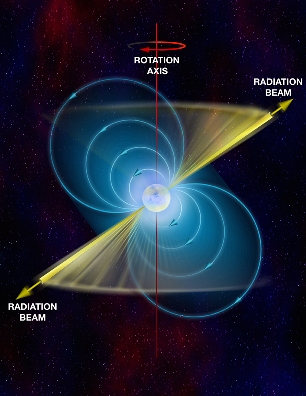Pulsar study shines new lights on Einstein’s theory
Neutron stars are the remnants of massive stars that exploded as supernovae, and the densest objects in the Universe (except for black holes, for which the concept of density is theoretically irrelevant). Pulsars are neutron stars that emit beams of radio waves outward from the poles of their magnetic fields. When their rotation spins a beam across the Earth, radio telescopes detect that as a "pulse" of radio waves.
By precisely measuring the timing of such pulses, astronomers can use pulsars for unique "experiments" at the frontiers of modern physics. Three scientists, including Dr. Ingrid Stairs from UBC Physics & Astronomy, presented the results of such work, and the promise of future discoveries, at the American Association for the Advancement of Science (AAAS) Meeting in Vancouver. As the largest general scientific gathering in the world, the 2012 AAAS Annual Meeting was attended by more than 8,000 researchers, journalists, policymakers, and science communicators from 60 countries.
While Albert Einstein's theory of General Relativity has withstood numerous experimental tests since its publication in 1916, there are several other competing theories. "Many of these alternate theories do just as good a job as General Relativity of predicting behavior within our Solar System. One area where they differ, though, is in the extremely dense environment of a neutron star," said Stairs.
In some of the alternate theories, gravity's behavior should vary based on the internal structure of the neutron star.
"By carefully timing pulsar pulses, we can precisely measure the properties of the neutron stars. Several sets of observations have shown that pulsars' motions are not dependent on their structure, so General Relativity is safe so far," Stairs explained. The precision of pulsar measurements is expected to get even better in the future, Stairs said.
For more information, visit:
National Radio Astronomy Observatory News Release - Pulsars: The Universe's Gift to Physics
AAAS Presentation Abstract, UBC AAAS, Testing Strong Gravity Using Radio Pulsars